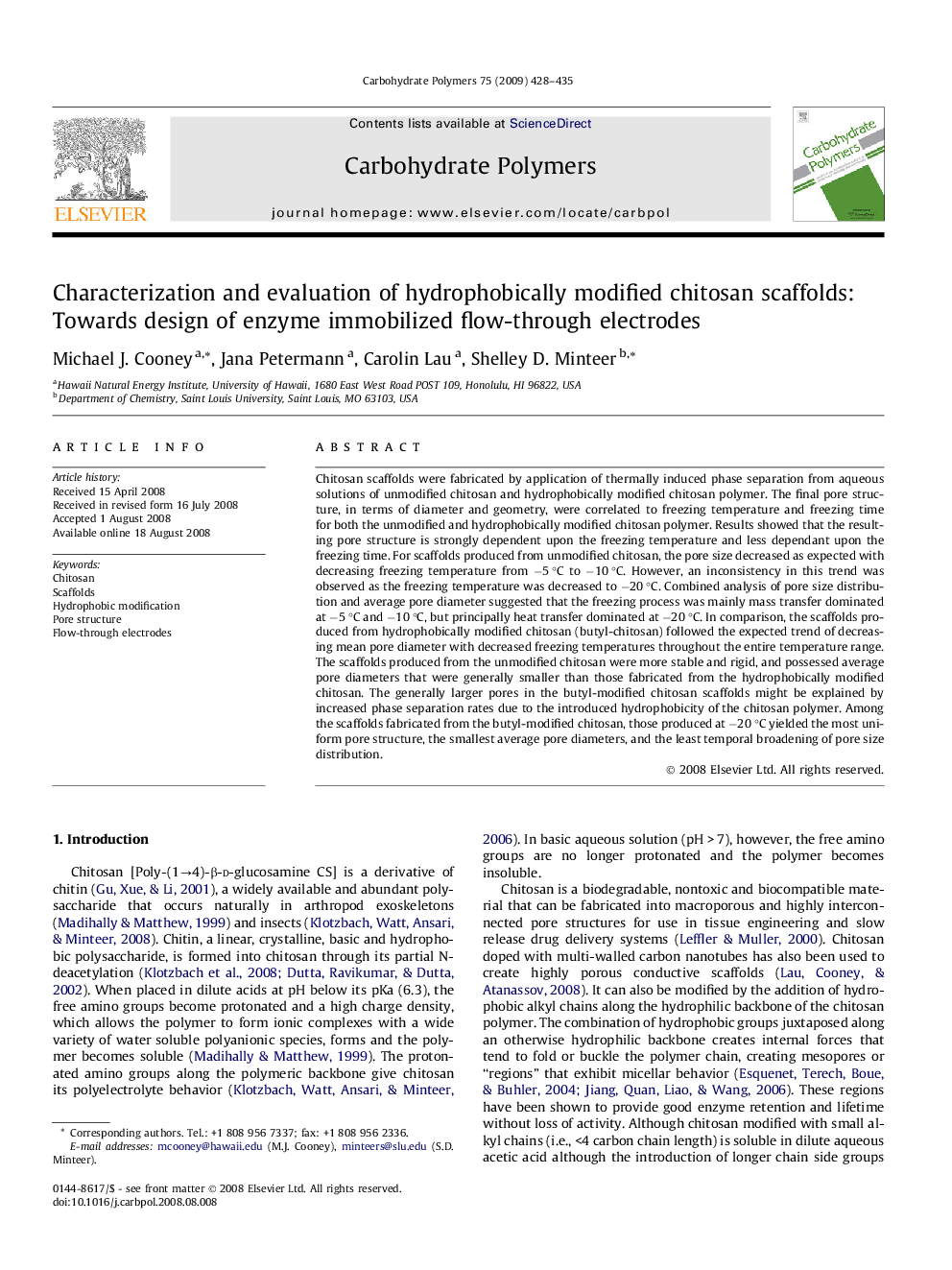| کد مقاله | کد نشریه | سال انتشار | مقاله انگلیسی | نسخه تمام متن |
|---|---|---|---|---|
| 1378970 | 982015 | 2009 | 8 صفحه PDF | دانلود رایگان |

Chitosan scaffolds were fabricated by application of thermally induced phase separation from aqueous solutions of unmodified chitosan and hydrophobically modified chitosan polymer. The final pore structure, in terms of diameter and geometry, were correlated to freezing temperature and freezing time for both the unmodified and hydrophobically modified chitosan polymer. Results showed that the resulting pore structure is strongly dependent upon the freezing temperature and less dependant upon the freezing time. For scaffolds produced from unmodified chitosan, the pore size decreased as expected with decreasing freezing temperature from −5 °C to −10 °C. However, an inconsistency in this trend was observed as the freezing temperature was decreased to −20 °C. Combined analysis of pore size distribution and average pore diameter suggested that the freezing process was mainly mass transfer dominated at −5 °C and −10 °C, but principally heat transfer dominated at −20 °C. In comparison, the scaffolds produced from hydrophobically modified chitosan (butyl-chitosan) followed the expected trend of decreasing mean pore diameter with decreased freezing temperatures throughout the entire temperature range. The scaffolds produced from the unmodified chitosan were more stable and rigid, and possessed average pore diameters that were generally smaller than those fabricated from the hydrophobically modified chitosan. The generally larger pores in the butyl-modified chitosan scaffolds might be explained by increased phase separation rates due to the introduced hydrophobicity of the chitosan polymer. Among the scaffolds fabricated from the butyl-modified chitosan, those produced at −20 °C yielded the most uniform pore structure, the smallest average pore diameters, and the least temporal broadening of pore size distribution.
Journal: Carbohydrate Polymers - Volume 75, Issue 3, 11 February 2009, Pages 428–435